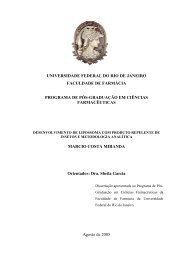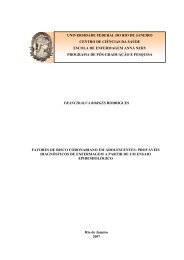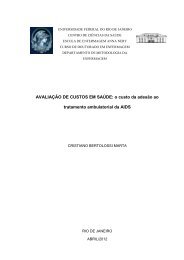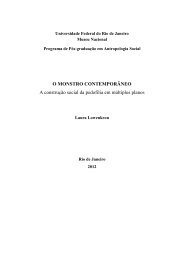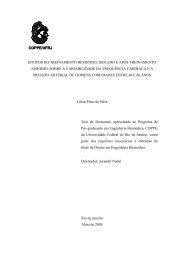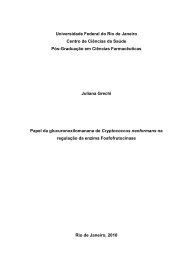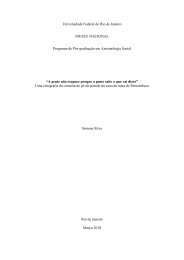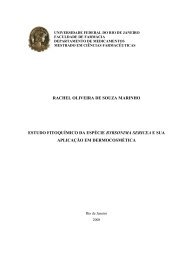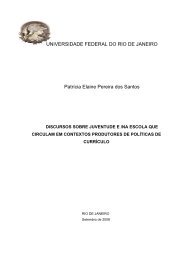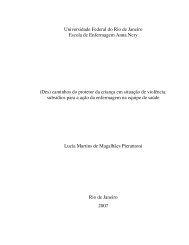ESTUDO DAS PROPRIEDADES MAGNÉTICAS DE ... - UFRJ
ESTUDO DAS PROPRIEDADES MAGNÉTICAS DE ... - UFRJ
ESTUDO DAS PROPRIEDADES MAGNÉTICAS DE ... - UFRJ
You also want an ePaper? Increase the reach of your titles
YUMPU automatically turns print PDFs into web optimized ePapers that Google loves.
viii<br />
ABSTRACT<br />
Study of the Magnetic Properties on Molecular Nanomagnets:<br />
Mn 12 Ac and Mn 6 salao<br />
Fernanda Farias<br />
Advisor: Miguel A. Novak<br />
Co-advisor: Monica Bahiana<br />
Abstract of Master thesis submitted to Programa de Pós-graduação em Física do Instituto de Física<br />
da Universidade Federal do Rio de Janeiro, as a partial fulfillment of the requirements for the degree of<br />
Master of Science – M.Sc. – (Physics).<br />
This work presents some aspects of the magnetic properties on the molecular nanomagnets Mn 12 Ac<br />
and Mn 6 salao. The first one has been studied since the 90s, and is considered an ideal superparamagnet<br />
at low temperatures, presenting hysteresis at temperatures below the blocking temperature (T b = 3K),<br />
characterized by steps in the magnetization, associated to thermally activated quantum tunneling. Its<br />
study is focused on comparisons between the magnetization curves acquired in the SQUID magnetometer<br />
and the ones simulated through the Monte Carlo method. The simulated results show a good agreement<br />
with the experimental data above T b , for the different directions in which the magnetic field was applied<br />
in relation to the easy axis of magnetization, and also point out a path towards reproducing the steps<br />
related to quantum tunneling. The Mn 6 compounds, on the other hand, have been gaining attention in<br />
the last two years for being the molecular nanomagnet with the highest blocking temperature observed<br />
(T b = 4.5K). In its more common form, it presents in the fundamental spin state S = 4, and AC<br />
susceptibilities measurements show that this nanomagnet can have its spin state altered according to<br />
the changes in the quantity of solvent in the sample, which is related to alterations in the angles formed<br />
between the directions of the ion’s positions in the molecule. The possibility to control the spin state of<br />
this cluster has not only an academic interest but also a strong technological appeal, as it may contribute<br />
to the development of more powerful devices to store information.<br />
Keywords: Molecular Magnetism, SQUID Magnetometer, Monte Carlo Simulation.<br />
Rio de Janeiro<br />
February 2009



